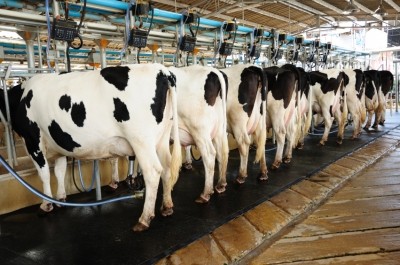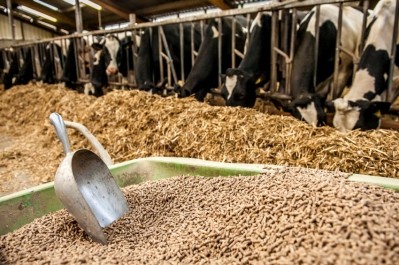Special Edition: Precision Feeding
Predictive models and ingredient interaction insights will change precision nutrition science: Alltech
![As we look to the future, precision feeding programs will become more complex and will be based more and more on powerful predictive models: Karl Dawson [pic (c) istock.com]](/var/wrbm_gb_food_pharma/storage/images/_aliases/wrbm_large/5/5/6/1/691655-1-eng-GB/Predictive-models-and-ingredient-interaction-insights-will-change-precision-nutrition-science-Alltech.jpg)
Dr Karl Dawson, vice president and chief scientific officer at Alltech, believes so. We caught up with him recently to get his take on the strategies producers and the industry can employ to get more from less with feed for all species.
FeedNavigator: In what way does existing industry feed formulation methodology in the various sectors have to evolve in order to really apply precision feeding strategies?
Karl Dawson: Over the last three decades, nutritionists have done an excellent job of understanding the nutritional value of common feed ingredients and have used compositional analyses to define feed formulation strategies. However, the next level of precision will require a better understanding of the dynamics of digestion, the interactions between feed ingredients and the structural forms of nutrients that influence utilization. This will require novel ways of characterizing feed ingredients and specific dietary formulations. These may include the use of more precise in vitro simulation models and the use of molecular tools to rapidly evaluate the quantitative effects of management and supplementation strategies on the nutritional value of complex feed mixtures. These go well beyond compositional characterizations that are commonly used to formulate feeds.
FN: Some commentators say the industry is only really interested in precision feeding when feed prices are high? Do you agree?
KD: While economics will always be a consideration when defining the value of any specific feeding strategy, other factors such as efficient management of feed sources, environmental impacts, product quality and animal wellbeing are becoming increasingly important in defining effective feeding programs. More precise feeding practices are critical to our ability to address the issues associated with these factors.
FN: Has your team gained some more understanding into the interactions between nutrients and many nutritional management strategies in the past 12 months, and can you share such insights?
KD: Some of our more advanced molecular tools are giving us new insights about many previously unknown nutritional interactions. For example, we have clearly demonstrated that the form of specific trace minerals in the diet is critical to their effective nutritional value. Organically complex minerals are clearly more effective at addressing specific nutritional roles than the traditionally used inorganic mineral salts. The modified nutritional role of such minerals is generally not considered in most feed formulation strategies, but can be readily demonstrated using modern molecular techniques. More efficient use of minerals found in organic complexes can be used as a tool to improve the product quality, to improve animal health and redefine energy metabolism.
Other work has recently demonstrated that specific combinations of organic minerals and exogenous feed enzymes can be used as economic alternatives to antimicrobial growth promoters in livestock production systems. These use new formulation strategies to nutritionally manipulate animal performance and health without necessarily increasing the cost of production.
FN: Are insights from nutrigenomics already being applied by industry today to get more from less in terms of feed?
KD: Nutrigenomics is the branch of science that examines the effects foods and nutrition has on gene expression. The science is allowing us to gain new insights into the value of many nutrients, understand nutrient interactions and develop new, more effective formulation and supplementation strategies. While it is still not a tool that can be used on a daily basis to evaluate the nutritional status of individual animals or groups of animals, it has definitely been used to uncover the hidden effects of diet formulations on the animal productivity and wellbeing.
FN: How far advanced is your team in terms of gut profiling for beef and dairy cattle, pigs and poultry and is industry any closer to finding indicators of optimal gut health?
KD: Our team is working with a number of markers that may be used as indicators of overall gut health, and is currently working to relate these to overall health and performance. However, it is becoming more apparent that the most precise profiling systems will be multifaceted and will not only look at gene expression or single biomarkers, but will also require assessment of the microbial processes in the gut as well as specific metabolic products generated by the host-microbial interactions in the gut. These reflect many complex nutritional interactions that precisely regulate animal production and health. These will challenge the current formulation models that are based mainly in compositional analysis of feed ingredients, but can be quantitatively incorporated in formulation models.
FN: Is there a particular development stage in dairy cows, or pigs or broilers that would appear to be enhanced more than others from a precision feeding approach?
KD: Each species animal undoubtedly has unique developmental stages that are more likely to provide greater opportunities for using precision feeding approaches. To-date, the most promising enhanced nutritional strategies are by manipulating feeding strategies during the first two or three days after hatching in chickens, during the early adaption period in feedlot beef cattle, during late gestation and during early weaning phase in both cattle and pigs. However, the strategies used during any given period in the production cycle are often influenced by management and nutritional practices used during a previous period. Understanding of such conditioning of gene function may well be the key to the most precise nutritional controls. It is clear that it may not be possible to associate all the potential nutritional benefits with a single developmental stage.
FN: What can we expect down the road in terms of precision nutrition developments?
KD: The big challenge today is in developing these models in a way that uses the most relevant information. This will most likely require some radical restructuring of our feed formulation models to include not only basic compositional analysis, but also information about nutrient interactions, accurate description of expected responses to specific supplementation strategies and more detailed quantitative description of the dynamic digestive processes associated with individual ingredients.
![[pic: (c) Alltech]](/var/wrbm_gb_food_pharma/storage/images/_aliases/medium/0/9/3/3/43390-3-eng-GB/Dr-Karl-Dawson.jpg)
![[pic: (c) istock.com]](/var/wrbm_gb_food_pharma/storage/images/_aliases/medium/7/9/3/3/43397-3-eng-GB/feeding-cows.jpg)
![[pic: (c) istock.com]](/var/wrbm_gb_food_pharma/storage/images/_aliases/medium/2/0/4/3/43402-3-eng-GB/chicks-in-hatchery.jpg)
















